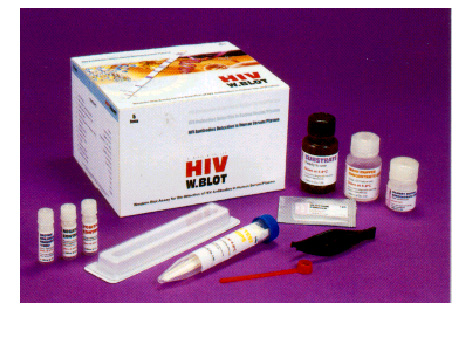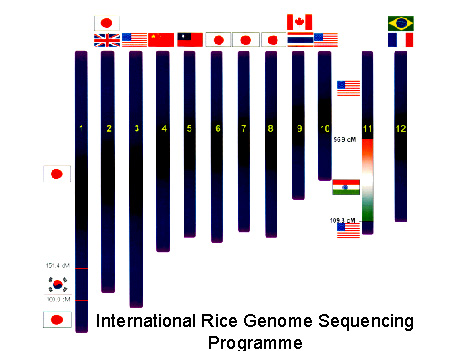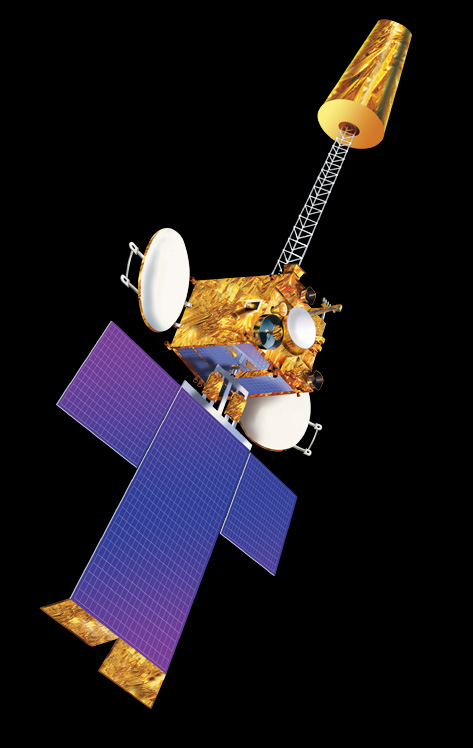2002- THE YEAR THAT WAS SCI-TECH ACCOMPLISHMENTS
- TWENTY RUPEE HIV DIAGNOSTIC KIT
- ADVANCED NUCLEAR REACTORS
- EXCL SATS FOR MET, HEALTH, EDU
SERVICES
Development of
cheap 20 rupee diagnostic kit for HIV/AIDS, cost-effective leprosy
vaccine, 8 nuclear reactors under construction, first 500/1000
MW reactors , technology to tap vast thorium reserves, Indigenous
cryogenic engine undergoing successful trials, successful testing
of modified PSLV launching above 1000 kg METSAT, launch of foreign
satellites, SARAS poised for test flight and India-Russia going
in for joint global technology-transfer, some science-tech highlights
of 2002.
Leaving aside
the controversy over the number of AIDS patients in India or around
the world, the reality is that, AIDS is staring in the face of
humanity and unless checked, it will strike the final blow on
mankind. In this backdrop, India has embarked on an ambitious
strategy to tackle the dreaded disease. First a highly cheap,
globally competitive diagnostic kit costing Rs. 20 only, (compared
with 50 dollars in the United States) has been developed. This
was most crucial to identify the HIV carriers.
The strain of
the HIV-1 sub-type C, the most prevalent genotype in India identified
and development of an AIDS vaccine in advanced stage. Research
is also onto develop inexpensive drugs to control the disease.
A cost-effective
vaccine and diagnostic-kit for leprosy has been fully commercialised
and are in great demand in the global market.
India’s contribution
in a ten-nation international effort to sequence rice genome has
secured worldwide acclaim. The draft sequence of the rice genome
is now complete.
The Prime Minister
in a message said "it is a matter of great pride for India
that its scientists have contributed to this international effort.
Publicly available rice genome sequence will be used by crop scientists
to pursue their goal in basic science and agriculture".
"Asmon",
a boon for asthma patients developed and commercialised. It is
a cheap, effective herbal remedy.
Genetically modified
Bt cotton allowed for commercial production after the completion
of all regulatory requirements. GM mustard is awaiting clearance
for commercial release.
Indo-Russian
Biotech centre set up at Allahabad especially to deal with bio-informatics.
Another Indo-Russian joint centre coming up in Moscow for joint
commercialisation of technologies in the global market.
Indo-US Science
Forum at a meeting in Delhi decides to take up joint research
in frontier areas of science i.e. hydrogen energy and fuel cells,
as alternative sources of renewable energy.
A surgical technique
to regenerate organs in mammals developed by an Indian doctor
gets US patent. Cow urine distillate developed for enhancing anti-microbial
effect of the antibiotic also secures US patent.
The final draft
of the new Science Policy ready and expected to be unveiled early
next month.
Allocation for
scientific departments enhanced considerably to garner a share
of 2 percent of GDP in five years.
‘SARAS’ the light-transport
aircraft is poised for test-flight, after running into roadblocks
following US sanctions.
World’s first 1-MW
floating ocean thermal energy conversion plant awaiting trial
run. Considerable progress in making drugs from sea for hypertension
and blood-pressure etc. A ten year perspective for ocean development
unveiled.
Eight more nuclear
power reactors are under various stages of construction. This
is the largest number of reactors currently coming up in the world.
These include four 220 MW and two 540 MW pressurised heavy water
reactors of indigenous design and two 1000 MW giant nuclear reactors
with Russian collaboration at Koodankulam. These will add 3960
MW power capacity to the national grid. Construction of all these
is progressing ahead of schedule.
India’s total nuclear
power capacity is programmed to reach 10,000 MW by 2012 and achieve
the target of 20,000 MW by 2020, to have a 10 percent share in
total electricity generation. The currently operating 14 nuclear
reactors registered an impressive 85 percent overall average annual
capacity factor maintaining excellent safety record.
The fast breeder
test reactor coming up at Kalpakkam is the first of its kind in
the world that uses plutonium-uranium mixed carbide fuel. The
Mark-1 core of the reactor has already reached a critical burn
up level. Fabrication of Mark-2 core is progressing well and the
design of the 500 MW sodium cooled prototype fast breeder reactor
is ready and construction to commence soon.
In the Fast Breeder
Reactors (FBRs) the utilisation of natural uranium goes up to
75 percent and the FBR technology will provide the much needed
long-term energy security. The Bhabha Atomic Research Centre (BARC)
has developed an advanced heavy water reactor to tap the thorium
resources. Thorium when irradiated gets converted into nuclear
fuel i.e. Uranium 233. Self sufficiency has been achieved in the
production of heavy water.
BARC has developed
a desalination technology for tapping sea water and a pilot plant
is coming up at Kalpakkam.
A 25-year Space
Vision is to be unveiled at the 90th session of the
Indian Science Congress, being held in Bangalore during 3-7 January,
2003. Having already achieved self-sufficiency in the fabrication
of satellites, India is now nearing self-sufficiency in launching.
The indigenous cryogenic engine undergoing successful trial runs
at the Liquid Propulsion Centre, Mahendragiri in Tamil Nadu is
scheduled to be ready in another two years and this will help
India achieve full self-sufficiency in launching of satellites
with heavier payloads. Though India has been launching satellites
with the help of its own time-tested PSLV, it is dependent on
foreign agencies like the French Ariane for launching heavier
satellites of the INSAT series. The EDUSAT, exclusive satellite
for enhancing the literacy level, is slated for launch by the
indigenously built GSLV with cryogenic engine, from our own soil.
INSAT-3A cleared
for launch in February while INSAT 3E in the middle of 2003.
The modified
PSLV C4 (Polar Satellite Launch Vehicle) was successfully flight-tested
with the launch of METSAT in September. Meant for exclusive meteorological
services, it weighed nearly 1200 kg and this is the first time
the PSLV designed for launching less than 1000 kg IRS satellites
in sun synchronous orbit, placed the heavier METSAT in geo synchronous
transfer orbit.
The GSLV (Geosynchronous
Satellite Launch Vehicle) is getting ready for the second developmental
flight in March 2003. When fully commissioned it will launch INSAT
like satellites, from our soil on cost-effective basis.
India has already
entered the era of commercialisation in space technology in a
small way with the launch of Belgian and German satellites in
Polar orbit with PSLV.
More remote and rural
areas have been brought under telemedicine programme, with the
application of satellite communication. Port Blair in Andaman
and Nicobar Islands was linked with this specialised medical facility
recently.
Space technology
has also come to the rescue of the handicapped by developing a
polyurethene foot like that of traditional Jaipur leg; It has
also kindled the interest of the Indians with the Mission to Moon
programme.
The India Meteorological
Centre, New Delhi will now serve as a Regional Centre for climate
change study and adaptation to the same. This is because of the
readily available infrastructure and expertise in India.
The Prime Minister
Shri Atal Bihari Vajpayee speaking at the CSIR Diamond Jubilee
celebrations rightly sums up,
"There
is another challenge before India’s S&T establishment. I have
spoken about it before, but it is necessary to restate it on today’s
occasion. It is the challenge of transforming our large S&T
base into a dynamic force capable of occupying leadership position
in global R&D".
* Note :
Exclusive INSAT-3A Photo and pictures of HIV diagnostic kit, leprosy
vaccine & and a graph showing India’s contribution in the
international rice genome project available on PIB website.

Leprosy vaccine

HIV DIAGNOSTIC KIT

AND INDIA’S CONTRIBUTION

INSAT-3A SCHEDULED
FOR LAUNCH IN FEB 2003